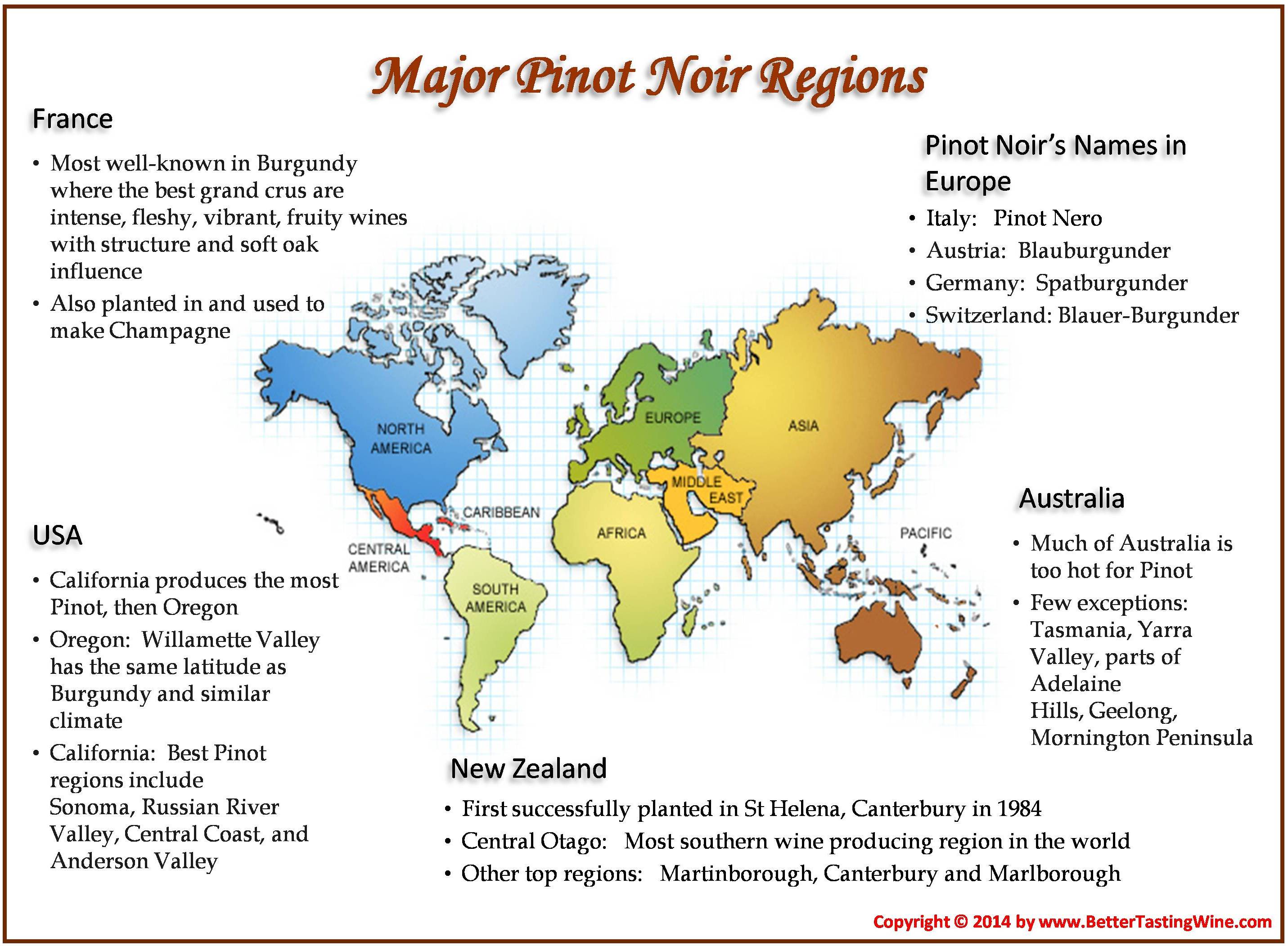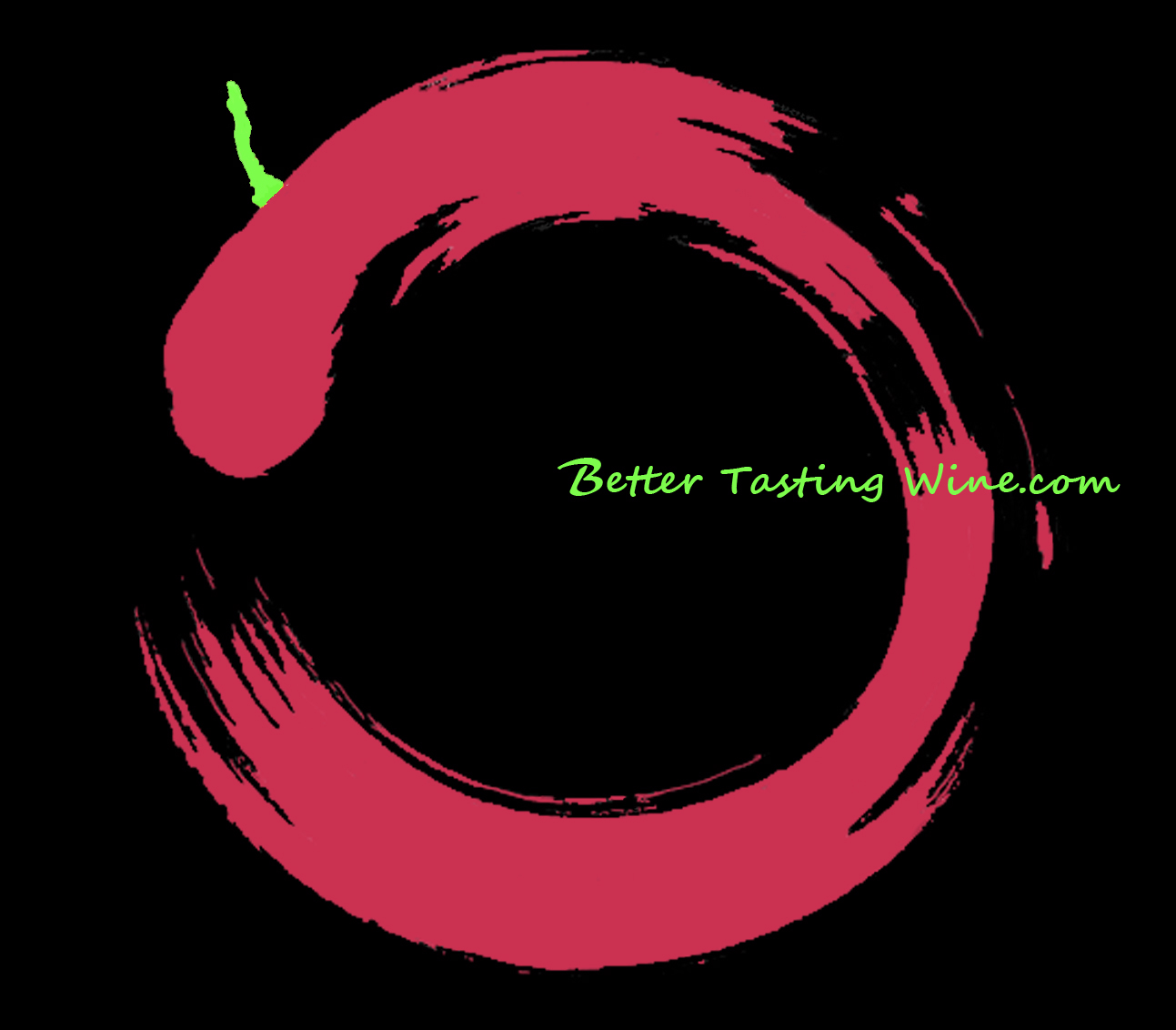Wine Tasting Tutorial: Pinot Noir around the World
Lesson Objectives:
- Experience the typcial character of red wines made from the Pinot Noir grapes
- Explore the differences between an old world Burgundy vs a new world Pinot Noir
- Learn the key regions in the world that produce Pinot Noir
Lesson Preparation:
Prepare 3 bottles of Pinot Noir. If you can, use the same young vintage and a similar price range for a cleaner comparison. To obtain an interesting comparison and wine tasting experience, we suggest Pinot Noir from the below regions:
- Burgundy (from Vosne Romanee or Chambolle Musigny, village level)
- US Pinot Noir (from Oregon's Willamette Valley)
- New Zealand Pinot Noir (from Central Otago).
The budget is ~US$40 per bottle. Invite friends to share the cost.
Key Pinot Noir Producing Wine Regions in the World
Pinot Noir, unlike Cabernet Sauvignon, is relatively difficult to cultivate. It requires cool climate so that the early ripening grape can reach maturity without losing acidity and aroma. Limestone is the preferred soil.

Appearance
Arrange the three glasses with Burgundy on the left, the US Pinot Noir in the middle, and New Zealand's Central Otago Pinot Noir on the right. Tasting these wines side-by-side will help you compare, understand, and remember their unique characteristics.
Observe the appearance of each wine. For all three glasses, you should notice a watery rim, a typical characteristic of Pinot Noir regarless of regions of production.
Tilt the glass against a white background and observe its color and intensity. Of the three, the Burgundy village should have the least intensity on the color.
Aroma
Do a quick clean check on the wines and then give the 3 wines a generous sniff, starting from left to right. What are the similar notes across the three glasses? What are the subtle differences?
Notes of strawberries, raspberries should be common across the three glasses. You may notice hints of black cherry, nutmeg, cloves, and possibly cinnamon in the New Zealand Pinot Noir.
The first sniff, the first impression is very important as it appeals to our intuition and familiar senses. An experienced wine taster could pick up notes of the terroir on the Burgundy. Hints of earthiness, not as fruit forward as the Oregon Pinot or the Central Otago Pinot.
Palate
Give each wine a good swirl on your palate and mark down your impressions.
All three wines are dry (not sweet) and with medium plus acidity, and medium alcohol. We have used cooler climate Pinot Noir for this exercise. Pinot Noir from warmer climate would be less acidic. Sometimes with jammy notes.
Do you experience any differences in alcohol, body, and tannins? Compared to the new world pinot noir, the old world red Burgundy should feel relatively less alcoholic (hot on the palate), lighter in body, and with less tannins.
Which wine do you prefer more? Why?
Exploring Pinot Noir Around the World
By specifying the regions, we strive to create an interesting wine tasting exercise for you. We hope you can remember the common characteristics found in Pinot Noir from all over the world; as well as remember their subtle differences.
To widen the exploration, you can include Pinot Noir from Sonoma (US), Germany, Italy, Australia, and Chile.
Pinot Noir is a very intriguing wine! There are other fun wine tasting alteration, for example:
- Burgundy and its Terroir: Comparing red Burgundy (same grade, same vintage) from Vosne Romanee, Morey St-Denis, Chambolle Musigny, Gevrey Chambertin, and Nuits St George. Notice the subtle difference in the aroma and palate profile of these Cote de Nuit villages.
- US Pinot Noir: US has varying regions with different climate and soil type. Compare Pinot Noir across United States' best Pinot producing regions; including Willamette Valley in Oregon; Anderson Valley, Sonoma Coast, Carneros, Russian River Valley, Santa Rita Hills, Santa Cruz, and Santa Lucia Highlands in California.
- Cool Climate vs Warm Climate Pinot Noir: In cooler climate, quality and character of Pinot Noir differs each vintage. Warmer climate Pinot Noir may not be as silky and sexy, as it will have more weight and alcohol. For cool climate, select from Germany, Italy, or Burgundy. For warm climate, choose a Pinot Noir from a warm climate region in Australia, Chile, or South Africa.
Explore, enjoy, and keep an open mind at all times!
Stay informed. Follow us and subscribe here to get our latest wine insider news and tips:
Practical Wine Lessons: Wine Tasting Like a Pro | Grapes | Serving Wine | Food Pairing | Preservation | Temperature | Restaurant Ordering | Wine Labels | Wine Regions | Wine Storage | Start a Collection | Common Wine Myths.
Useful Wine Tips: Ten Facts to Become an Instant Wine Pro | Vintage Guide | Removing a Broken Cork | Serving Order of Wines | Fastest Way to Chill a Wine | Host Wine Party | Elements of a Good Wine | Wine Investment "Winning" Guide | Leftover Wine: Recipe for Vino Punch | Freeze Your Leftover Wine | Wine Moods Pairing | Best Way to Preserve Champagne After Open | Ten Must-Have Wine Accessories.
Tasting Tutorial: Cabernet vs. Merlot vs. Pinot Noir | Sauvignon Blanc vs. Chardonnay vs. Riesling | Burgundy vs US vs New Zealand Pinot Noir.
Fun Download: Wine Tasting Scorecard | Wine Serving Temperature Chart | Wine Aroma Table | 3 Must-Know Red Grapes | 3 Must-Know White Grapes | Vintage Chart | Wine Party Themes | Wine Region Maps | Grand Cru Chart | Wine and Moods Pairing Chart | Wine Quotes & Wine Humor.
Travel & Exploration: Champagne 101 | Bandol | Italy | Spain | Sherry.
Jewels & Gems: Grower Champagne Pierre Gimonnet | Gravner Ribolla - An Amber Wine Maturated in Clay | Gaja - King of Barbaresco.
